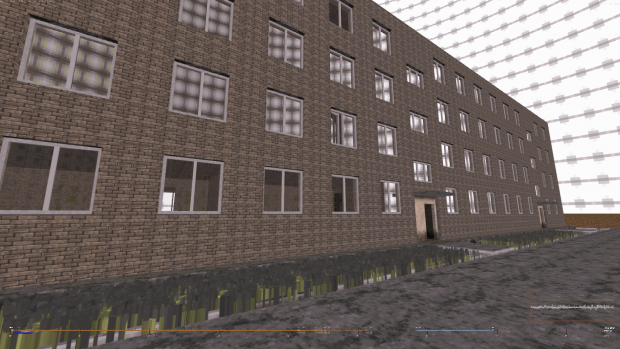Brahma is a 3D game engine with a rather retrofuturistic design, intended for small studios and solo developers. It's being written from scratch in C++ using standard Windows API and no third-party libraries. This technology introduces an entirely new class of low-latency real-time engines that make special timing requirements, treating frames as video fields with a target time budget of 2-4 ms each, down from 16-33 ms frame budgets normally seen in game engines. It evolves in a different way than other modern engines, rejecting conventional BSP, Z-buffer, floating-point coordinates, and most of the lame screen-space effects in favor of innovative and efficient techniques. The engine is non-Euclidean capable to some degree; also it supports true displacement mapping for sectors as a means to virtualize geometry that affects collisions. The engine is also carefully designed to be easy and convenient to develop for, yet versatile and adaptive to any needs.
To test the renderer's ability to handle multiple portals, I've tried to build a four-storey apartment building with reflective windows and interiors you can walk inside, namely stairways and blank apartments on each floor.
Large buildings with actual interiors seen through the windows pose a challenge even for modern game engines. If the rooms are not meant to be accessible, they are normally faked with cubemap-like textures to save on polygon count and draw calls, and window reflections are done in screen space if done at all. Brahma seems to be pretty comfortable drawing all interiors modeled with real sectors and render actual Fresnel reflections for each window in a couple of such buildings, but some level of detail techniques need to be implemented to render them quicker from a distance if we want to implement actual cityscapes this way.






